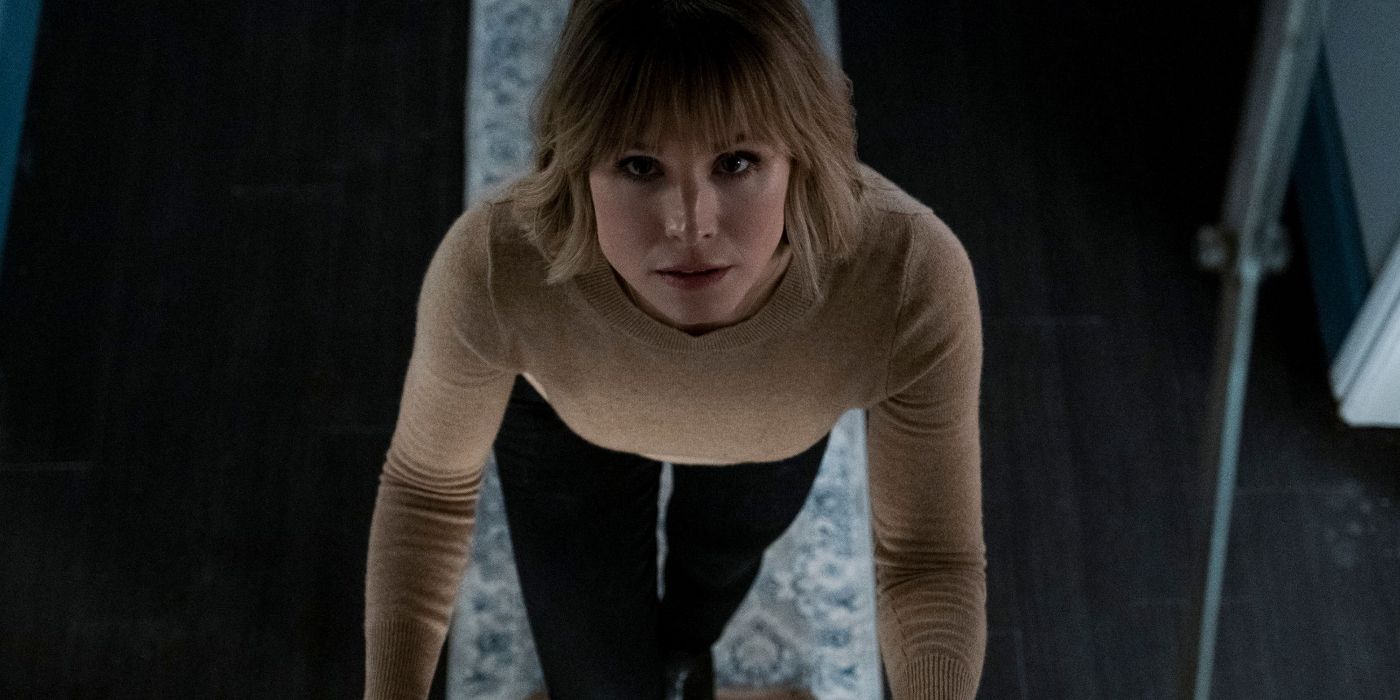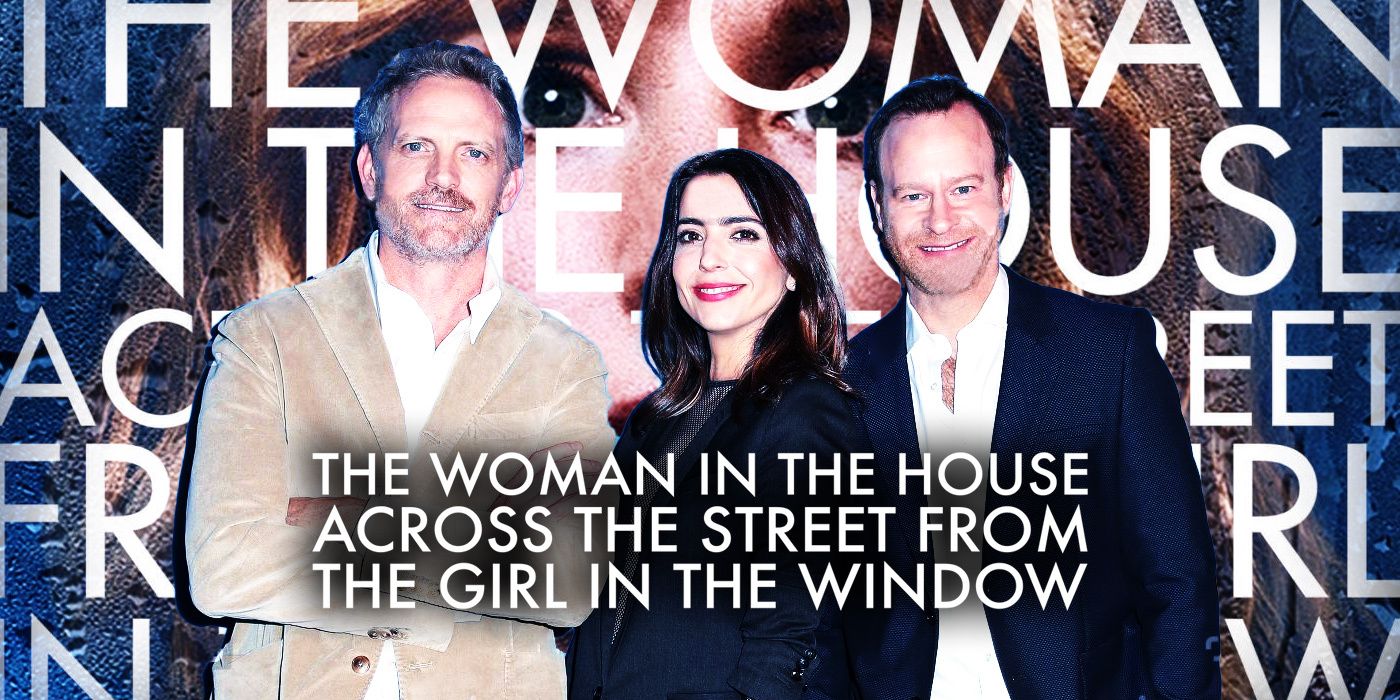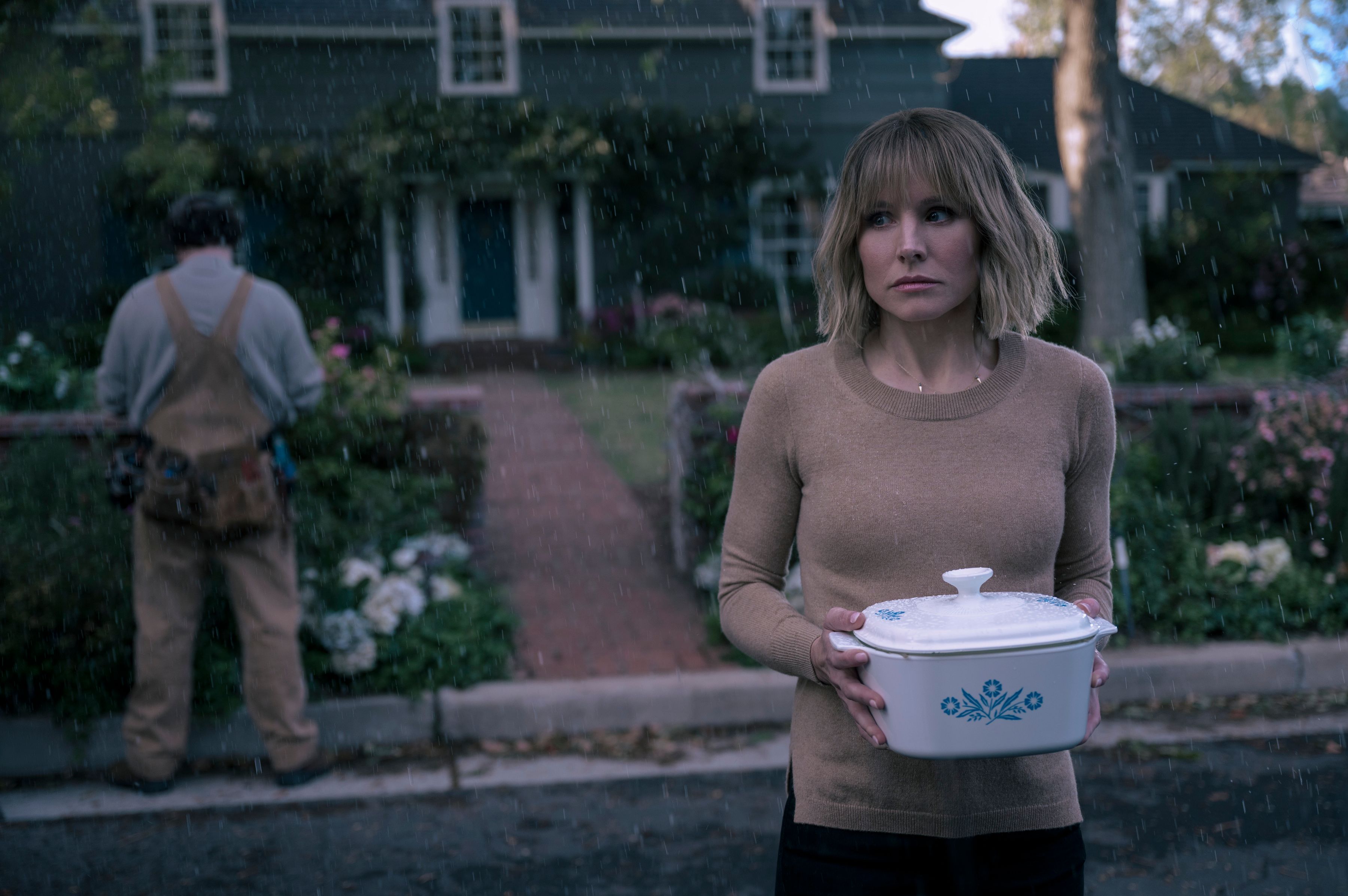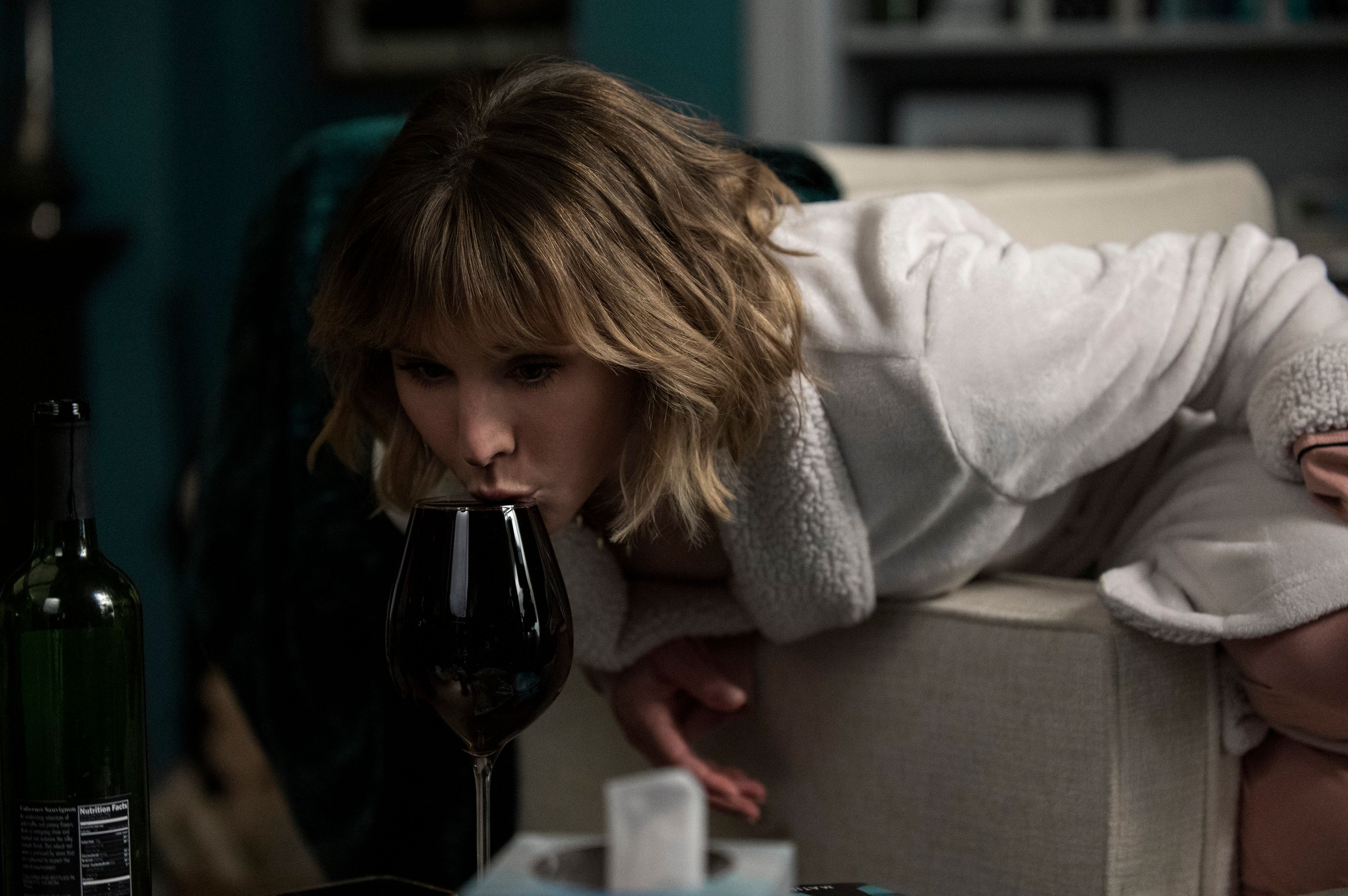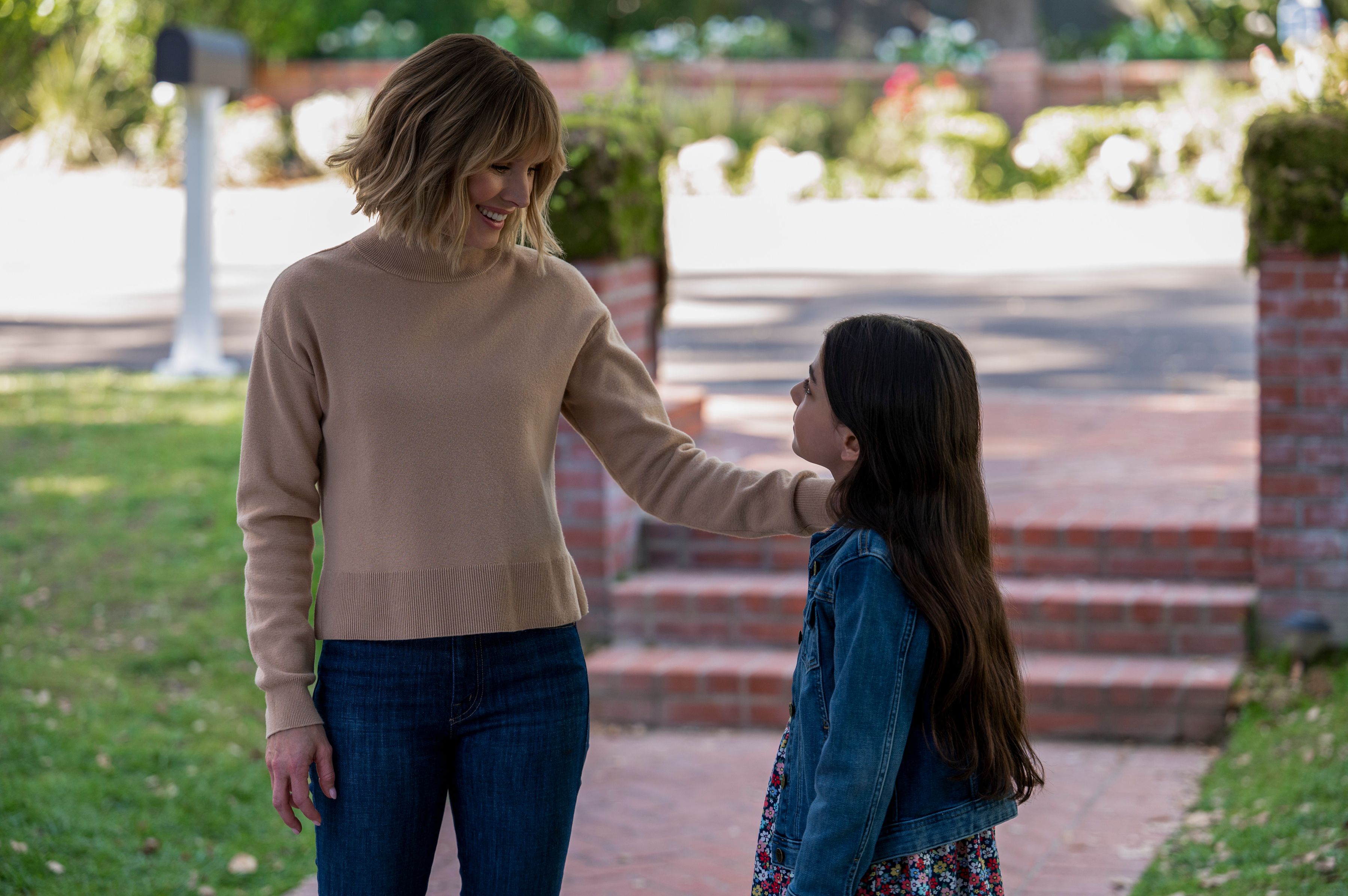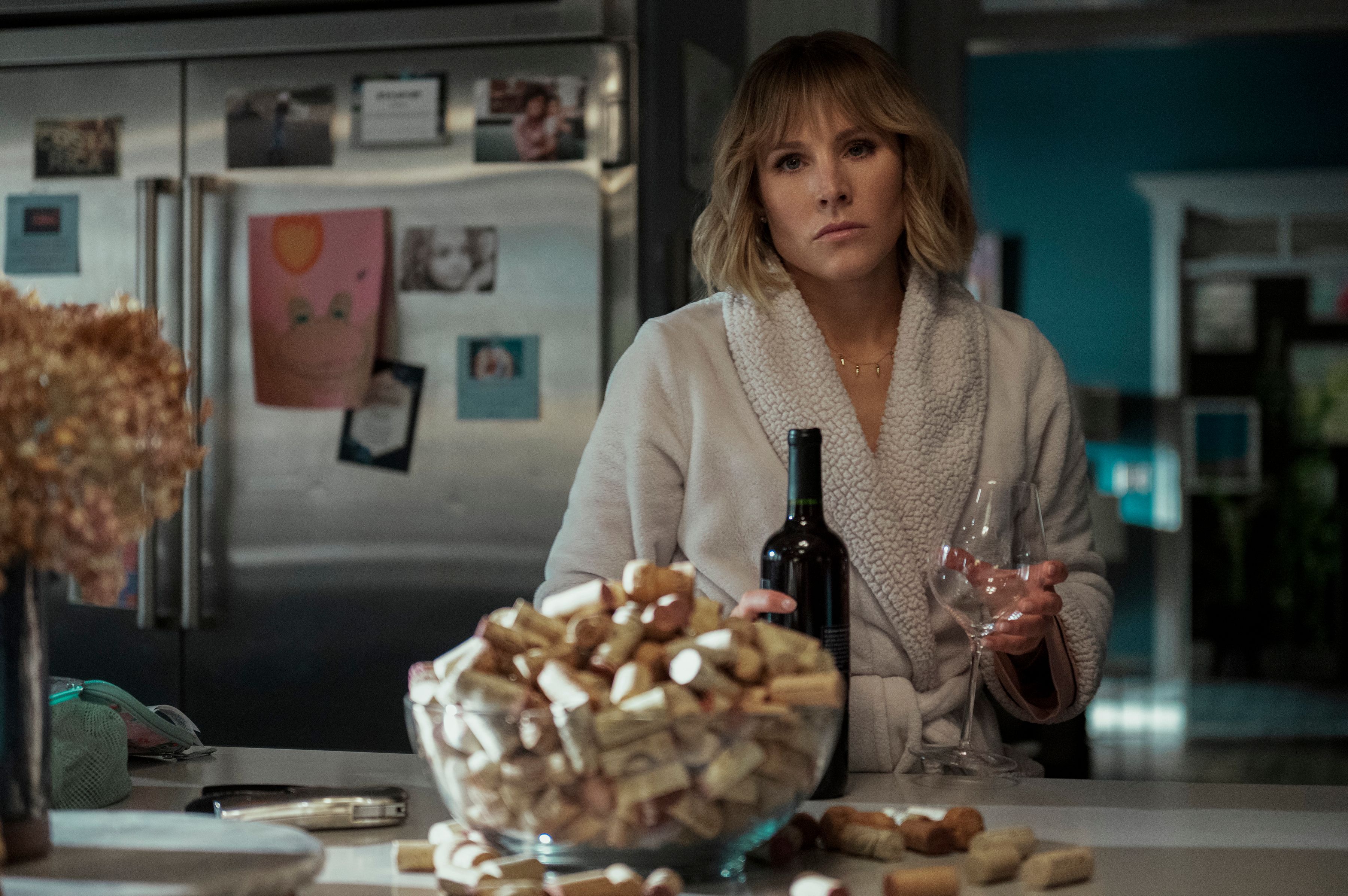Editor’s note: The following contains major spoilers for The Woman in the House Across the Street from the Girl in the Window.
The Netflix original series The Woman in the House Across the Street from the Girl in the Window is a show that’s chock-full of twists and turns whose twists and turns have twists and turns. When Anna (Kristen Bell, who’s also an executive producer on the project) witnesses a gruesome murder across the street, which may or may not have actually happened (you can blame the fuzziness on all the wine that she drinks while keeping a watchful eye out the window), she begins to question everything and everyone as she tries to figure out what’s going on and who’s responsible.
Just when you think you’ve uncovered the answers, you learn how wrong you actually are, all the way until the final cliffhanger moments. As a result, of course, Collider had to get on the phone with show creators/writers Rachel Ramras, Hugh Davidson, and Larry Dorf to discuss all the wild insanity that takes place across these eight episodes. During the interview, they talked about how this project evolved, conceiving it as a limited series with a cliffhanger, whether they know what would happen next if the series were to actually continue, how that wild cameo came to be, what ultimately led them to their shocking whodunit reveal, and if they know what’s happened to the ventriloquist dummy since filming ended.
Collider: When did you first start developing and writing this project? Did the idea start a while back, or was it something that happened quicker than that?
RACHEL RAMRAS: I love these books, just like so many people – Gone Girl, The Girl on the Train, The Woman in the Window, The Woman in Cabin 10, and the list goes on. It just struck us as very funny that the plots of these books are almost always identical, but they’re bingey, and they’re fun, and they’re exciting, and I could read a hundred of them. There’s either women or girl in the title of all of them, so it started with this absurd title. Then, it was deciding how overtly funny we were gonna make this. The tone we settled on, we hope and think is the most successful.
HUGH DAVIDSON: When Rachel first had that realization that all these books were seeming the same, we thought it was funny. We thought of the title, and then we thought it was so obviously funny that we shelved it for a while, and we worked on something else that didn’t work. And then, we came back to this. The reason that this became something was that it was more than just a spoof. At first blush, it felt like, “Oh, it’ll be so comedic.” But then, as we got into it, and we worked with Netflix and Marti Noxon and our producers for Gloria Sanchez Productions, there was a desire to see how much we could ground it in reality and make it feel more high stakes. And then, that had us dig deeper and deeper and deeper into it and get something that’s more unique than a comedic spoof of something.
Obviously, the ending of this gives the impression that there definitely needs to be another season. Is that the hope? Is that the plan? Is this a story that you already know how you would want to continue for another season?
RAMRAS: It is a limited series and, in its conception, that’s how it ended. Part of the fun of the ending is that thrilling cliffhanger. It reminds me how, at the end of Gone Girl, she walks into the house, and you’re like, “Oh my God, what is their life about to become?” But you don’t see it. That doesn’t mean there couldn’t be another one, but it is of the genre to go out with a heart-pounding bang.
Even if we never get to know it, do you guys know what would happen next, just for yourselves, because you couldn’t help but think about what would come next?
LARRY DORF: We do. We wanted everything to be grounded, so when we wrote that scene on the plane with Glenn Close, we did want that to make sense. So, as part of that process, pages do exist of what happens when that plane lands. We do have an idea.
Obviously, it is a deliciously fun cameo at the end of this. How did that specific cameo come to be? Did you only ever have one choice, as far as who you wanted? What did you do to ensure that it was Glenn Close?
RAMRAS: In talking about it, it was always, “Someone like Glenn Close,” because she’s the OG of this whole genre. Never in a million years, did we think we’d get her, so it was someone like her. And then, one day, I was on the phone with her and her manager, and I gave her the elevator pitch. She said, “I wanna wear something fabulous.” Two days later, she was on set, filming it. It was a pinch me moment for all of us, certainly. I can’t conceive of anyone who would’ve been better for that, so it was exciting for us.
So, how did that phone call with her actually happen?
RAMRAS: Normally, Glenn and I just talk about the kids and things like that. No. We’ve gotta give credit to Netflix on this one. Netflix figured out a way to get in touch with her manager, and we knew her manager, so he was able to vouch for us. She has a great sense of humor, so she understood the joke and the bit, and she leaned right into it.
After everything that happens in the season, you just let Anna find her footing before throwing this curveball on the plane. Why was that how you wanted to end the season, specifically with the plane, the murder on the plane, and making us again question whether we can even trust what Anna is seeing?
RAMRAS: The way these stories are told, the female lead is vindicated in the end and everybody tells her, “You were right. I should have listened to you.” We poke fun at that, in the hospital scene. That would have been such a soft ending for such an exciting show that it felt like it would’ve been disappointing to just end with, as satisfying as it is that she’s back with Douglas, and they have a baby and people are like, “You’re not crazy,” we, as the writers and as people who would imagine watching it, knew we needed something crazy to happen at the end and unexpected. On the heels of The Flight Attendant, it seemed like a good choice.
Should we be doubting her sanity again, or should we be fully trusting her now and along with her, if we were to ever find out what happened next?
DORF: We should know that Anna is someone where it’s, “Here we go again.” She knows something and no one takes her seriously. But when she finds that compact, how did that get there?
RAMRAS: I think she’s reliable. The audience should know that no one’s gonna believe her, but Anna knows what she saw, and we’ve gotta help her on this ride too, to solve it.
DORF: No one’s gonna believe her because again, she drank too much and took pills, but she did see something.
I have to say that, for some reason, I love it anytime a ventriloquist dummy is involved in a story. Where does that dummy live now? What happened to the ventriloquist dummy? Did you burn him? Does he live a good life somewhere?
RAMRAS: I hope he lives with Tom Riley, the actor who plays Neil. That was quite a sight. We didn’t know what to expect, so kudos to the prop department.
DAVIDSON: If we couldn’t have gotten Glenn Close, we could have had the ventriloquist dummy in the seat on the plane.
RAMRAS: Good point.
I love that this show reminded me a bit of the movie Clue, which was one of my favorite movies as a kid. They shot different endings with different killers to show the audience what could have happened in these different scenarios, and with the way this show is set up, where you keep having these reveals of, “Here’s the killer,” and then, “No, this person’s the killer,” and then, “No wait, now she’s the killer,” it feels like any one of your choices, whether it be Neil or Rex or Buell or even Anna, could have actually been an interesting place to land.
RAMRAS: For this, it couldn’t have been because it would’ve been too predictable, coming off of The Undoing. That was an amazing one where you’re thinking it’s the husband, and then you’re like, “Well, it can’t be the husband,” and then it was the husband. What The Undoing did was it has now trained the audience that, even when you’re positive, you’re not. There’s a chance you’re wrong. We knew we had to do something extra.
DORF: When we were watching the first cut of the episode where Buell seems to be the killer and he’s going over there, I felt like I would’ve been totally satisfied if Buell was the killer. That seemed so exciting, but then we were about to see this little kid. It’s an amazing thing to feel like those things would’ve worked, they probably just wouldn’t have been as funny.
RAMRAS: I love that you referenced Clue. I hadn’t thought of that, but that was one of my favorite movies also. Because it’s playful, but exciting and silly and it’s fun, you’re hooked. So, I love that you thought of that.
Why did you ultimately decide that it had to be Emma that was responsible for just about everything? A lot of stories won’t go so far as to kill the kid, even if they are responsible, so what made you decide to just fully go there with that?
DORF: That is why, because we’ve never seen it done before. We wanted something truly surprising and truly absurd, by that point in the show. We also thought there was something very satisfying about watching Kristen Bell in a savage, brutal, long fight with a little, sweet girl.
Were you ever worried that you wouldn’t find an actress that could pull off what would be required of her, especially for the final moments for her character?
RAMRAS: We were. That was a fun process though. Watching those auditions was very entertaining because there were the cutest little girls you’ve ever seen just saying the most horrific things. But the moment we saw Samsara [Leela Yett], that kid is gonna have quite a career because she is so good, so sweet and so innocent, but there is something dark and haunting about those brown eyes of hers. She’s quite a star. And Michael Luhrmann, our director, was so fantastic, working with her and speaking that language with a kid. She was amazing. But you’re right, it was dependent on that. We said that, early on, to our casting director, and she was like, “We’ll find it, don’t you worry.” She had no doubt. We were nervous, but she was not.
DORF: Tackling having an adult killing a kid at the end is something that people don’t do because it could be done in a way where you feel bad for the kid. But we wanted to make the kid so savage and so terrible by that point that we think we went so far that it’s funny.
You really take on everything with this, from the wine drinking, to the rain, to the attic, to all the misdirection, and even layering in grief and a love story. Were you ever worried that you were taking on too much and throwing too many things into the mix, or did it feel easier, the more things you added?
DAVIDSON: Maybe the fact that it was a limited series was helpful in that regard, instead of it being a movie. We would’ve been hurried. By it being a limited series, there was enough time to have all those things, and then give them the time they each deserve, so that you can establish the stakes of any of those things or places, like the attic, but also have time in the attic to put little bits of absurd humor. It probably helped us to have eight episodes to get to do all that.
Every time I wondered why you decided not to include something, then you did. It felt like you really made sure to throw everything in.
RAMRAS: Right down to having Kristen sing the opening song, which was a nod to The Undoing and Nicole Kidman.
It definitely seems like there would be legal and ethical issues with Anna’s ex-husband also being her therapist.
RAMRAS: Probably.
What brought that about?
DORF: It was another absurd thing, where her husband is her therapist. He means well and tries to do a good job, but he’s not very good at his job. He takes his kid to take your daughter to work day and has her in the room with a serial killer. But it’s all grounded. It seems like this all could happen.
RAMRAS: And like a lot of these bingey shows you, you do need, “Oh my God!,” moments throughout the series. This just seemed like one of the most laughable ones, but hopefully we pulled it off.
The Woman in the House Across the Street from the Girl in the Window is available to stream at Netflix.

